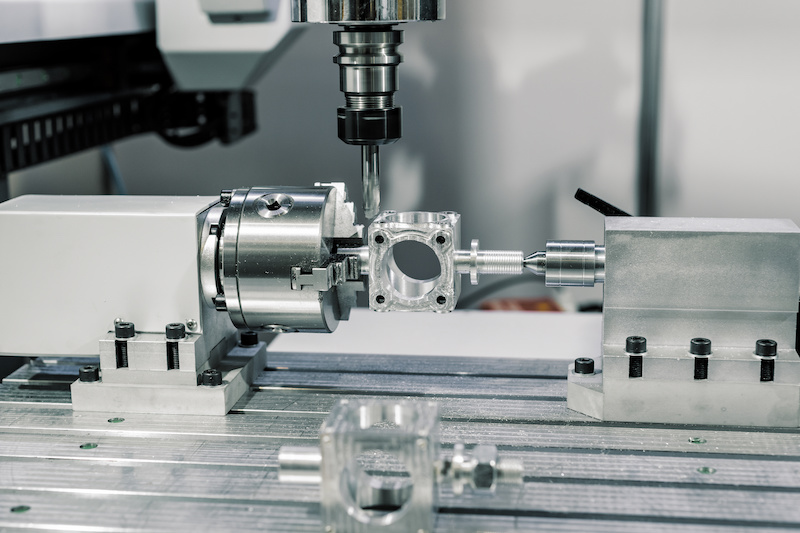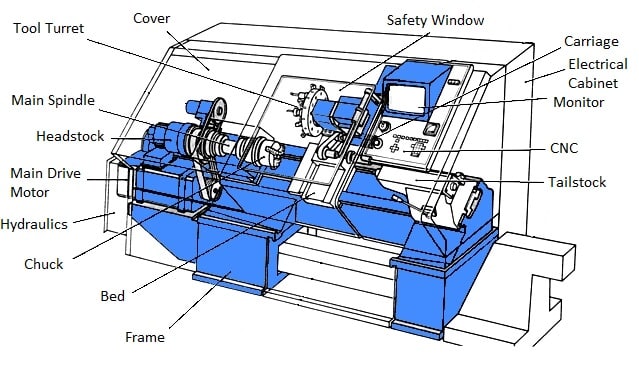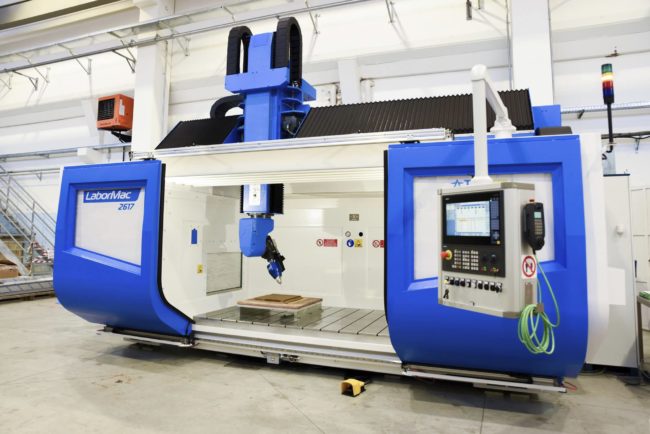Table of Contents
CNC lathe machines have revolutionized the manufacturing industry with their precision, accuracy, and speed. These machines are capable of producing intricate and complex parts with ease. However, before we dive into the details of how many axis a CNC lathe machine has, let’s first understand what a CNC lathe machine is and how it works.
A CNC lathe machine is a computer-controlled machine tool that rotates a workpiece on its axis to perform various operations such as cutting, drilling, and shaping. The machine uses a variety of cutting tools to remove material from the workpiece, creating the desired shape and size. Now, let’s explore the number of axis a CNC lathe machine typically has and how it affects the manufacturing process.
A CNC lathe machine typically has two primary axes: the X-axis, which runs horizontally, and the Z-axis, which runs vertically. However, some machines may also have a third axis, the Y-axis, which runs perpendicular to both the X and Z axes, allowing for more complex cuts and shapes.
How Many Axis in CNC Lathe Machine?
CNC lathe machines are widely used in the manufacturing industry for precision cutting and shaping of various materials. These machines use computer numerical control (CNC) to automate the cutting process and provide greater accuracy and consistency. One of the most important factors in a CNC lathe machine is the number of axes it has. In this article, we will discuss how many axes are present in a CNC lathe machine and their significance in the manufacturing process.
What is an Axis in a CNC Lathe Machine?
In CNC machining, an axis is a direction in which the cutting tool can move. A CNC lathe machine can have multiple axes, each of which is used to control the movement of the cutting tool in a specific direction. The more axes a machine has, the more complex shapes it can produce.
In general, a CNC lathe machine can have up to six axes, with each axis representing a different direction of movement. These axes are labeled as X, Y, Z, A, B, and C.
Primary Axes in a CNC Lathe Machine
The primary axes in a CNC lathe machine are the X, Y, and Z axes. The X-axis controls the movement of the cutting tool along the horizontal plane, while the Y-axis controls the movement of the cutting tool along the vertical plane. The Z-axis controls the movement of the cutting tool along the depth of the workpiece.
These primary axes are essential for producing simple shapes and designs in a CNC lathe machine. For example, if you want to produce a cylindrical shape, you would use the X and Z axes to control the movement of the cutting tool along the length and diameter of the workpiece.
Additional Axes in a CNC Lathe Machine
In addition to the primary axes, a CNC lathe machine can also have additional axes, such as the A, B, and C axes. These axes are used to control the movement of the cutting tool in more complex ways, allowing for the production of intricate shapes and designs.
The A-axis controls the movement of the cutting tool around the X-axis, while the B-axis controls the movement of the cutting tool around the Y-axis. The C-axis controls the rotation of the workpiece, allowing for the production of angled cuts and complex shapes.
Benefits of Having Multiple Axes in a CNC Lathe Machine
Having multiple axes in a CNC lathe machine provides several benefits. First, it allows for greater flexibility in the manufacturing process, as the machine can produce a wider range of shapes and designs. Second, it improves the accuracy and precision of the cutting process, as the machine can make more complex movements with greater control.
In addition, having multiple axes can also improve the efficiency of the manufacturing process, as it allows for the production of more complex shapes in a single operation. This can help to reduce the time and cost required to produce complex parts and components.
CNC Lathe Machine with 4 Axes vs 5 Axes
When it comes to choosing a CNC lathe machine, the number of axes is an important factor to consider. A machine with four axes can produce a wide range of shapes and designs, but it may not be suitable for more complex parts and components.
On the other hand, a machine with five axes provides even greater flexibility and precision, allowing for the production of more complex shapes and designs. However, machines with five axes tend to be more expensive and may require a higher level of expertise to operate.
CNC Lathe Machine with 5 Axes vs 6 Axes
Finally, a CNC lathe machine with six axes provides the greatest level of flexibility and precision, allowing for the production of the most complex shapes and designs. However, these machines tend to be the most expensive and may require a higher level of expertise to operate.
When choosing a CNC lathe machine, it’s important to consider your specific needs and requirements, as well as your budget and level of expertise. By understanding the significance of each axis, you can make an informed decision and choose the right machine for your manufacturing needs.
Frequently Asked Questions
How many Axis in CNC Lathe Machine?
A CNC lathe machine is a computer-controlled machine tool that can automatically turn and shape metal into various shapes and sizes. The number of axes in a CNC lathe machine varies depending on the machine’s complexity and the type of workpiece it is designed to handle.
Typically, a CNC lathe machine has two to three axes, with the most common being the X and Z axes. The X-axis controls the horizontal movement of the cutting tool, while the Z-axis controls the vertical movement. Some machines also have a C-axis, which controls the rotation of the workpiece.
In more advanced CNC lathe machines, additional axes may be added for greater flexibility and precision. For example, a multi-axis lathe may have up to five axes, with additional axes controlling the movement of the cutting tool, the workpiece, or both.
What is the importance of multiple Axis in CNC Lathe Machine?
Multiple axes in a CNC lathe machine allow for greater precision and flexibility when it comes to shaping and turning complex workpieces. With more axes, the machine can perform more complex operations, such as contouring, threading, and drilling.
In addition, multiple axes allow for simultaneous cutting and shaping of the workpiece, which can help to reduce cycle times and increase productivity. This is especially important in high-volume manufacturing environments where time is of the essence.
Overall, the importance of multiple axes in a CNC lathe machine cannot be overstated. It allows for greater precision, flexibility, and productivity, making it an essential tool for any modern manufacturing operation.
In conclusion, understanding the number of axes in a CNC lathe machine is crucial for any machinist or manufacturer. With the ability to control multiple axes simultaneously, these machines can produce complex and intricate parts with remarkable precision.
While the number of axes can vary from machine to machine, the most common ones include the X, Y, and Z axes. These axes allow for movement along the horizontal, vertical, and depth planes, respectively, and are essential for creating parts with a high level of accuracy.
In summary, the number of axes in a CNC lathe machine is an important factor to consider when choosing the right machine for your manufacturing needs. By selecting a machine with the appropriate number of axes, you can ensure that your parts are produced with the precision and accuracy required to meet your specifications.
Request a quote today!
[contact-form-7 id="1578" title="Contact form"]
Please compress the file into a ZIP or RAR file before uploading. Alternatively, send through your RFQ by email.
enquires@unitymanufacture.com





